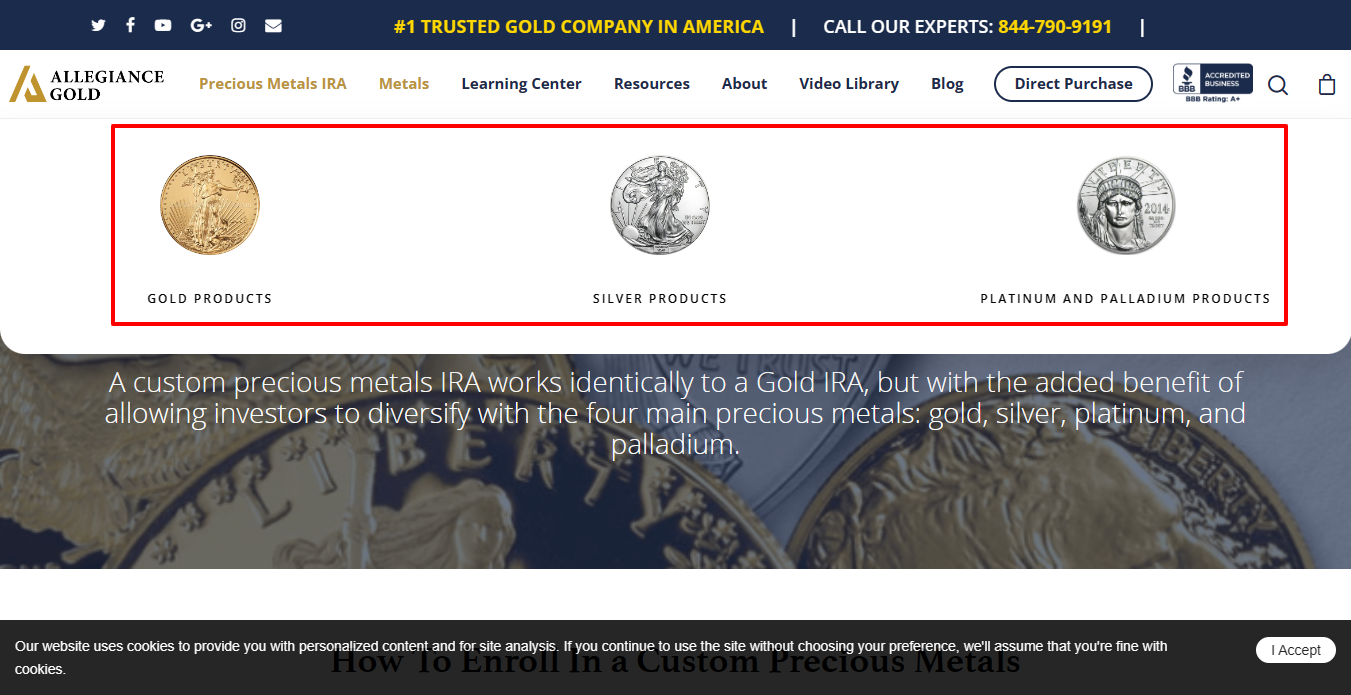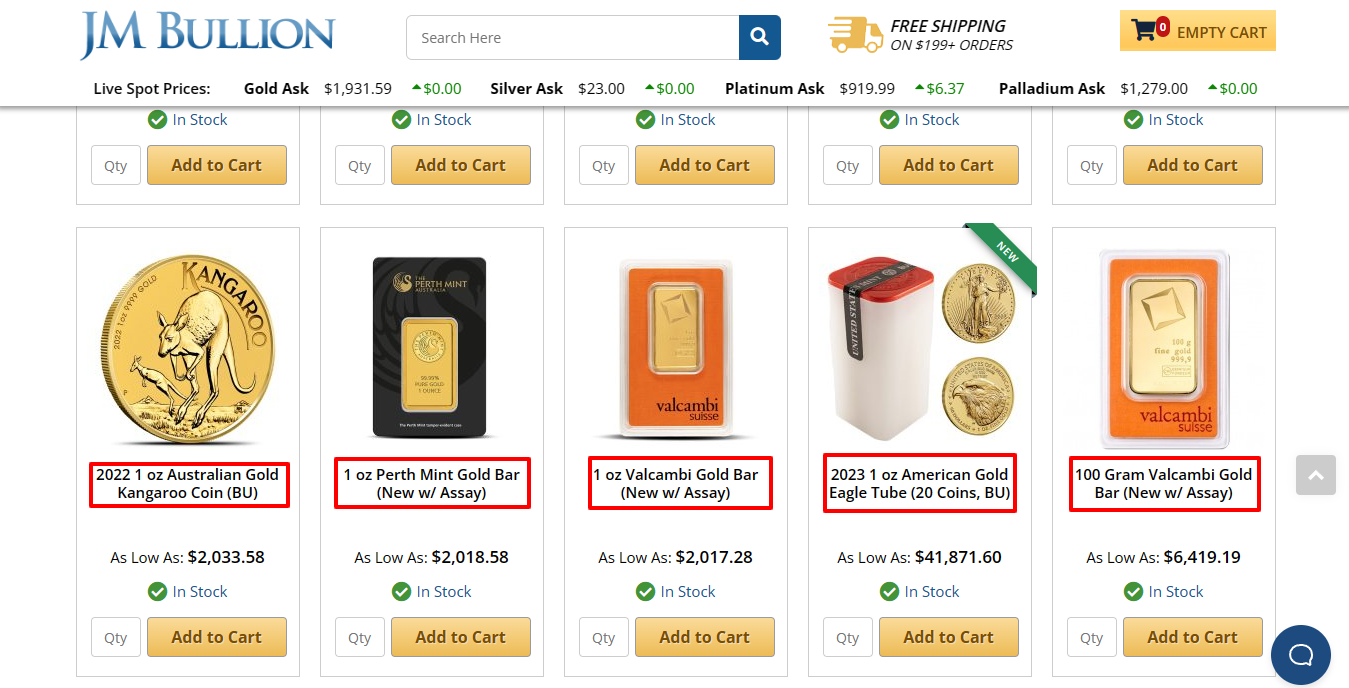Gold IRA physical possession means taking possession of your physical gold once you turn 59½ and start taking distributions from your retirement account. It means having direct control and management of the physical gold you've invested in. If you have a net worth of over $250,000, you can also take possession of your physical gold by opening a home storage gold IRA. The process requires forming an LLC, building a special IRS-approved storage facility at your home, and a slew of other requirements. However, none of these requirements need to be met once you reach retirement.
Having your gold investments at home can offer several advantages, like saving money on storage fees and having access to your gold in case of an emergency. However, it also comes with its own risks, like the risk of loss in case of natural disasters, the risk of theft, and the real risk of losing your and your family’s life in the event of a violent break-in.
If you want to open a gold IRA that'll let you take possession of your gold once you retire, you can choose Augusta Precious Metals as a gold IRA company.
When you invest in a retirement account like an IRA, you have the choice to take distributions once you turn 59 ½. If you invested part or all of your retirement funds in a gold IRA, you can receive these distributions in cash after selling the gold or taking physical possession of your gold investments.
This guide covers the steps to take physical possessions of the gold invested in an IRA. It also covers the key differences between a regular gold IRA and a home storage gold IRA, it discusses the factors to consider when purchasing physical gold, storage options, the IRS rules and regulations around gold IRA physical possession, and how you can have your “in-kind” distributions delivered to your home.
Understanding Gold IRA Physical Possession

Gold IRA physical possession revolves around the concept of holding actual gold bullion within a self-directed Individual Retirement Account (IRA). By definition, the gold IRA allows you to invest in gold or other precious metals with funds from your retirement savings.
At the same time, physical possession means that you have direct ownership and control over your gold assets within the IRA. It can also refer to taking physical possession of the gold you’ve invested into your gold IRA once you turn 59 ½ and start taking distributions.
Gold IRA Vs. Home Storage Gold IRA
A common misconception about taking physical possession of your gold investments is that it means storing your gold at home in a home-storage IRA. This is not necessarily the case.
When investing in physical gold for retirement, there are two options to choose from in terms of storage: you can choose a normal gold IRA that stores your gold in an IRS-approved depository, or, under certain circumstances, you can choose a home storage gold IRA. This last option lets you physically own precious metals at home but differs in terms of requirements, security, control, and compliance with the IRS. The table below will help you understand the difference between these two options.
| Gold IRA | Home Storage Gold IRA | |
| Custodian | Requires a reputable custodian to facilitate the purchase, storage, and maintenance of your physical assets. | Requires a custodian, a minimum personal net worth of at least $250,000, and it also require you to register a Limited Liability Company or LLC. |
| Storage Option | Custodians offer IRS-approved depositories where you can choose segregated or non-segregated storage. | Can be stored personally at home in a private vault or safe, which gives you more control but makes it more vulnerable to accidents, theft, or damage. |
| Control | Your custodian is responsible for purchasing, storing, and keeping records of your assets. | You have direct control and access to your assets, and you have to manage your gold investments yourself. |
| IRS Regulations | Must work with a custodian in order to comply with the IRS rules and regulations, such as contribution limits, distribution limits, and reporting requirements. | Must work with a corporate legal counsel and provide a detailed annual audit by a professional public accountant. |
Factors To Consider When Purchasing Physical Gold
If you'd like to take physical possession of your gold, there are certain factors that you should consider:

Purity Standards Or Minimum Fineness Requirement
The purity standards or minimum fineness of precious metal is what makes it eligible for an IRA. Whether you buy physical gold or other precious metals from other gold IRA custodians, they follow the same guidelines set by the IRS to ensure you're investing in high-quality and authentic products.
In case you're wondering, here's a glimpse of what every precious metal should have, considering that you won't only invest in gold.
- Gold: at least 99.5% pure or 0.995 minimum fineness
- Silver: at least 99.9% pure or 0.999 minimum fineness
- Platinum: at least 99.95% pure or 0.9995 minimum fineness
- Palladium: at least 99.95% pure or 0.9995 minimum fineness
Form
Two popular forms of gold that investors usually consider are coins and bars. Gold coins are round and small that often relate to an important historical event, making them more easily tradable when needed. So if you're interested in the historical aspects of coins, then gold coins may be more appealing to you.
On the other hand, gold bars are rectangular blocks of gold, which hold little historical value, but are widely traded for their gold content. They come in various sizes, from 1 gram to 1 kilogram. So, for example, if you have $19,000 to buy gold, you can purchase 10 bars that weigh 1 ounce. This strategy will make it easier to find a buyer in case you need extra cash rather than instantaneously selling a 10-ounce gold bar.
Storage And Insurance
Storage and insurance should go hand-in-hand when you're purchasing physical gold. Although storing your gold at home is possible, many investors secure their gold investment in an IRS-approved depository for better security.
You might spend at least $100 annually on storage fees plus additional fees for an insurance policy, especially when there's theft or flood that you may be unable to retrieve your assets. But if you're short on money, some custodians offer free storage for a limited period, like American Bullion, provided that you invest or roll over a minimum of $50,000 into your account.
Premiums
Gold coins usually have higher premiums than gold bars. Premium is the difference between the actual price of gold versus what you pay. This varies depending on which type of gold you're purchasing, the mint, and the demand for that specific product.
For instance, if you saw online that the spot price of gold is $1,919 per ounce, but when you are out to buy from your custodian, the price would be $1,940 per ounce. This means that the premium that your custodian charged was worth $21.
So if you're buying a significant amount of gold, it's best to buy a 1-kilogram gold bar since it focuses more on content and value and has lower premiums than gold coins.
IRS Rules And Regulations For Possessing Physical Gold
So you already know what IRA-eligible gold is and how you can invest in it, and now you want to identify which gold coins and bars are the best to have for your retirement.
Tax Implications And Reporting Requirements
Owning physical gold for your gold IRA might seem like an easy task since your custodian will be there to assist you, but there are tax implications and reporting requirements that you need to know to comply with the IRS. These are:
1. Early withdrawal penalties – it might be tempting to withdraw your funds for cash or in-kind precious metals in case of emergencies, but doing this may get you in financial trouble.
You'll be paying a 10% early withdrawal fee if you take your distributions before you reach 59 ½, so unless you're using it for specific medical expenses, it would be best to keep your account until retirement.
2. Capital Gains Tax – you're subject to a capital gains tax whenever you want to sell your physical gold from your gold IRA. You'll be paying the maximum capital gains tax of 28% for your precious metals, no matter if you belong to the 33%, 35%, or 39.6% income tax bracket.
The IRS taxes your physical gold at ordinary income tax rates, but you can reduce it by selling it after at least one year. This can help qualify your investments to a long-term rate, which helps reduce your capital gains tax.
3. Sales tax – sales tax refers to a tax that is usually charged when you buy precious metals like gold. The tax rates may vary since 42 states have already removed the sales tax from purchasing gold and silver, while the other 8 remaining states, including Hawaii and New Jersey, are still under consideration.
4. IRS Form 5498 – as a precious metals investor, you must report your gold IRA annually to the IRS. The IRS Form 5498 reports all contributions and distributions you made in your account each year. Although your custodian will be the one to file the report, you can also receive a copy for your records.
Transactions And Investments
Aside from tax penalties and reporting requirements, the IRS has strict instructions on which precious metals are allowed in an IRA and how you use your investment account. These are:
- IRA-eligible gold products – as mentioned before, you can only invest in physical gold coins or bars that meet the purity standards set by the IRS (like 99.5% purity for gold). Australian Gold Kangaroo Coin, American Gold Eagle Coins, Perth Mint Gold Bars, and Valcambi Gold Bars are examples of investments you can store in an IRA.

1. Required Minimum Distributions (RMDs) – RMDs are the annual minimum distributions you need to withdraw once you reach the age of 72 (or 73 if you reach 72 after December 31, 2022). This is the right time to take withdrawals to avoid any penalties, and you can choose your distribution in cash or in-kind physical gold.
When you take RMDs or when you voluntarily withdraw from your gold IRA after turning 59 ½, you can choose to withdraw your physical gold and have it shipped to your home or a safe deposit box of your choice. When you do this, you are literally taking possession of your gold investments.
2. Disqualified Persons – disqualified persons are individuals, including yourself, your partner, and your lineal descendants (grandchildren, children), with whom you aren't allowed to do any transactions from within a gold IRA.
In other words, you shouldn't buy or sell physical gold from any of these individuals or the companies they own for your benefit. If you fail to comply with this rule, your gold IRA and its benefits could be disqualified, resulting in additional taxes and penalties.
How To Take Physical Possession Of Gold In Your Gold IRA
If you already turned 59 ½ and want to take physical possession of gold invested in your IRA, all you have to do is follow these simple steps:
Step #1 Contact Your Gold IRA Custodian And Request A Distribution
You can contact them through a phone call and notify them that you want to withdraw your funds “in-kind” distribution, meaning that you choose to receive physical gold bars or coins as payment.
Step #2 Complete A Distribution Request Form
Your custodian will provide you with a request form where you need to fill out important details to receive your physical gold.
Step #3 Submit The Form To Your Custodian
After filling out the form, you're required to submit it to your custodian along with your signature for verification. After your custodian approves your decision, your precious metals will be shipped directly to you in at least 7 business days, and you can do anything you want with them once delivered.
How To Store And Secure Your Physical Gold
Even though you can take possession of your physical gold after turning 59 ½, keeping a gold bar or gold coins at home lying around may not be a smart move. Still, you have the liberty to choose between storing your gold in a professional facility or in a private safe.
Here are some things to consider to help you make up your mind.
The Case For Third-Party Storage Facilities
Third-party storage facilities, secure depositories, or vaults are separate entities specializing in storing and protecting precious metals. They collaborate with a gold IRA custodian to ensure your purchases and storage arrangements comply with the IRS, helping you avoid early withdrawal or distribution penalties.
A third-party storage facility offers several advantages over home storage, such as:
- Insurance coverage – this insurance provides an extra layer of protection if they lose or damage your assets in the depository. These policies typically cost at least $150, depending on the custodian or facility.
- Enhanced security – IRS-approved depositories offer advanced protection, such as surveillance systems and trained security personnel, to reduce potential theft or unauthorized access to your physical gold. However, this comes at a cost. Using their storage can cost at least $100 annually.
- Compliance and audits -third-party facilities can lessen the burden of providing annual reports of your transaction or sales of your metals to the IRS.
The Case For Home Storage
The home storage option involves holding your physical gold or other precious metals in the comfort of your home. Instead of contacting your gold IRA custodian or logging into your account to check the status of your assets, you can easily access your physical gold whenever you want to.
Like storage facilities, home storage can also offer several benefits, such as:
- Lower or nonexistent storage costs – unlike third-party storage, with home storage, you won't have to pay storage fees to ensure the safety of your physical gold. On the flip side, you may need to hire security personnel to keep your home vault safe.
- Personal access – having your precious metals at hand may give you a sense of satisfaction and reassurance. This allows you to monitor your investment more closely without relying on third-party facilities or custodians.
- Protection against emergencies – having immediate access to your gold can be advantageous when you need to evacuate on short notice because of conflict or natural disasters. This wouldn’t be an option in the case of a third-party storage facility.
However, home storage also involves some risks, such as:
- Limited protection from natural disasters – you may lose your physical gold or other precious metals if your area is susceptible to natural disasters like floods, fires, or typhoons. This can lead you to lose your assets and retirement savings.
- Security risks – storing your physical gold at home makes it an attractive target for thieves and other criminals. So if you didn't install high-quality security systems, you might end up risking your savings and possibly your or your family’s life.
A Summary Of Gold IRA Physical Possession
Gold IRA physical possession means withdrawing your retirement fund from a gold IRA “in kind,” meaning as actual gold, instead of selling the assets and receiving cash. You can do this without penalty after turning 59 ½ either voluntarily or as part of your MRDs. This is an investment decision where you can have direct control and ownership of the physical assets you hold in your gold IRA.
Alternatively, some consider taking physical possession of your gold choosing home storage for your gold IRA. With a home storage gold IRA, you store your gold investments in a special storage space built at home which must comply with IRS standards. In this case, you can take possession of your physical gold before turning 59 ½, albeit you won’t be able to take it out without penalty until you retire; plus, you’ll have to form an LLC and must have a minimum net worth of a quarter million dollars to be eligible for a home-storage gold IRA.
Overall, if you're ready to take minimum distributions from your gold IRA, you can contact your custodian and choose your distributions to be in the form of gold bullion, so you can sell or keep them at home.
Gold IRA Physical Possession FAQs
Can I take physical possession of gold in my IRA?
Yes, you can take physical possession of gold in your IRA, but you need to be 59 ½ to possess any asset. You may also need approval from your custodian stating that you'd like to get your distribution in physical gold rather than cash, where its procedure can differ depending on the custodian.
Can you physically hold gold in an IRA?
Yes, you can physically hold gold in an IRA by working with a gold IRA custodian like Augusta Precious Metals, which allows you to invest in gold and other precious metals. By opening a gold IRA, you can easily fund and purchase the type of gold you want to invest in for your retirement portfolio.
Is it smart to buy physical gold?
The decision to buy physical gold depends on your overall investment risk and retirement goals. If you want to buy gold to use it as a hedge against inflation or a tool for diversifying your portfolio, it can be a smart move for your investment strategy. However, if you'd like to earn dividends like stocks and want to save money on storage or delivery fees, investing in physical gold may not be your choice.
What is an IRA backed by physical gold?
The IRA backed by physical gold is a gold IRA that allows you to invest in gold or other precious metals to help diversify your retirement savings with tangible assets.
Can you hold physical gold in a 401(k)?
No, you can’t hold physical gold in a 401(k). You can, however, use the funds in your 401(k) to invest in physical gold by rolling over your 401(k) to a gold IRA. You can open a gold IRA and work with a gold IRA custodian to transfer your existing retirement funds to your new account. Once transferred, you can purchase your physical gold bars or coins and store them in an IRS-approved depository.
Can you buy physical gold in a brokerage account?
Yes, you can buy physical gold in a brokerage account. Some brokerage firms allow you to purchase physical gold as part of their investment products. However, you have to take note that not all firms offer this option, so you may look for gold IRA companies like Augusta Precious Metals or Goldco to purchase physical gold.
How much gold can you own?
The amount that you can own depends on your preferences and budget. If you can afford to buy gold and store them in a secured facility, then it's your choice. However, you must report on your tax return the sales and transactions you made with your gold or other precious metals to comply with the rules of the IRS.


